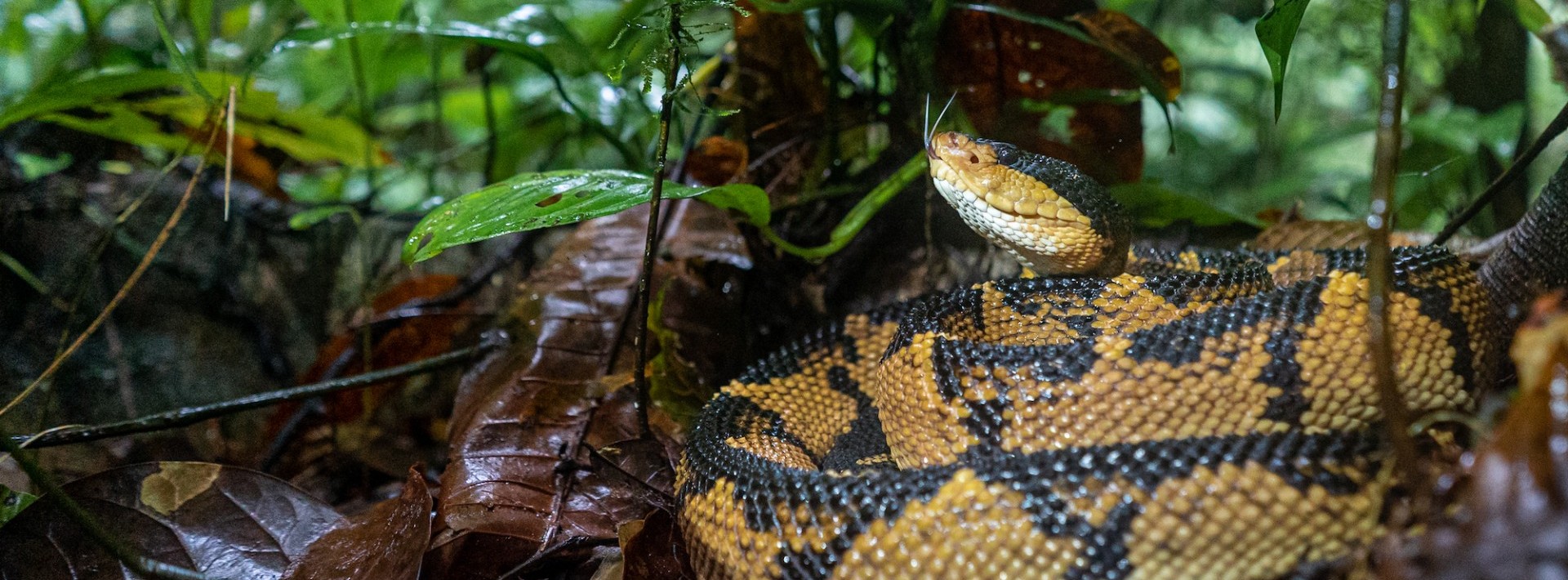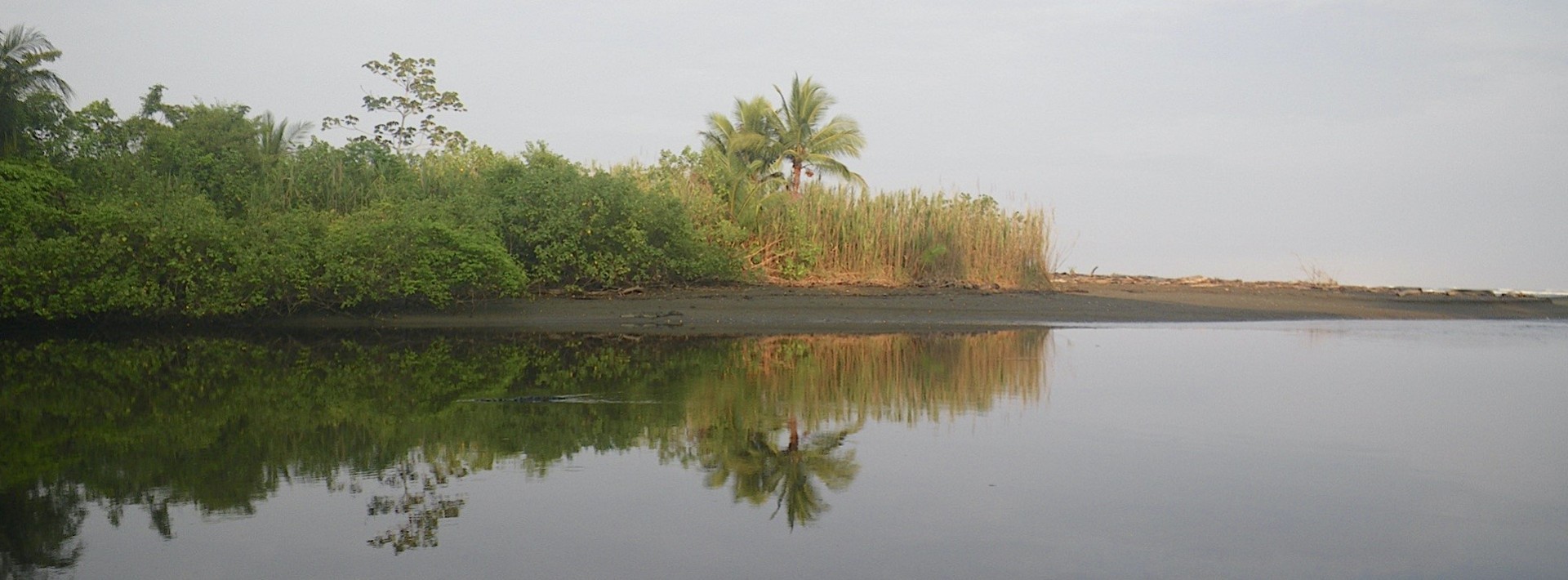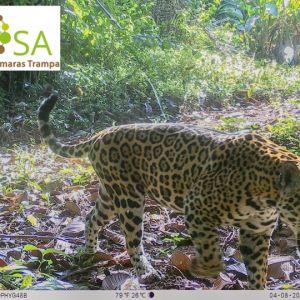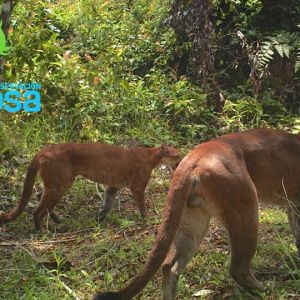In Brief
Conservation Value:
The Osa Peninsula contains the largest mesic rainforest remaining on the Pacific slope of Central America, largely within Corcovado National Park. It has the largest expanse of mangrove wetlands on the Pacific slope of Central America and a unique coastal marine ecosystem—the Golfo Dulce tropical fjord. The Osa is estimated to house 2.5% of the world’s biodiversity while covering less than 0.001% of its total surface area, and was described by National Geographic in 2016 as “the most biological intense place on earth”.
Threats:
The main threat in the Osa Peninsula is illegal hunting, which is still prevalent in the region. The concern is greatest with respect to the lowland paca (Cuniculus paca), white-lipped peccary (Tayassu pecari) and collared peccary (Pecari tajacu). Other species are hunted to a lesser degree, including game birds such as: tinamou (Tinamus major and Tinamus major castaneiceps) and great curassow (Crax rubra). Research has identified key areas of hunting pressure, however no concerted effort had been been made to reduce illegal hunting on the peninsula. A presentation at the 21st Mesoamerican Congress in San Jose in 2017 revealed that bushmeat offtake could be around 28.5 kg per year for each family hunting in the peninsula.
Actions & Results:
Osa Conservation (OC) is leading a conservation effort that mobilizes citizen scientists, community members, ecotourism operators, park administrators and multiple NGOs to preserve the globally significant biodiversity of the Osa Peninsula in the face of climate change. To accomplish this, connectivity must be re-established from the Osa lowland rainforests to the Talamanca Mountains. In collaboration with a network of partners and local stakeholders, OC is rebuilding this connectivity via its 'Ridge to Reef' initiative to help protect one of the world’s last wild places. In 2023, OC's Rainforest Protectors and Rangers patrolled 51,743 km of forest using the Earth Ranger application. OC planted 107,565 native, rare, or tree species and 64,000 mangroves in southern Costa Rica. Its Restoration Network—a collaboration with local farmers to restore degraded land and implement wildlife-friendly farming practices across the region—grew from 210 to 346 local farmers in just one year. It deployed 27 arboreal bridges throughout the AmistOsa (Biological Corridor) landscape to facilitate the safe crossing of roads for wildlife. It deployed or monitored 86 transmitters to track key wildlife species throughout the ecosystem including, 83 vultures, 2 Baird’s tapirs, and 1 rehabilitated ocelot released on the Osa Conservation Campus. It welcomed over 1,000 visitors, including 24 early career fellows and interns who will be the next generational cohort of ecologists and conservation leaders. It also opened the region’s first canopy tower, which climbs to 100 feet and connects researchers, students, and visitors to the treetops. And, through its Ridge to Reef Nature Club—which provides free outdoor immersion opportunities for Costa Rica's most impoverished children—OC engaged over 400 local children in hands-on expeditions and educational activities in the wild, and organized 61 nature field experiences focused on different aspects of nature, such as: snorkeling excursions in the Golfo Dulce to see wildlife first-hand; rainforest canopy excursions to learn about treetop biodiversity; sea turtle patrol and hatchling release; rare and native tree planting activities; and, bird monitoring (including participations in official bird counts).
Zero in on one community involved in this project in this short video from the Our Planet series.
See more videos below.
Goal:
To increase ecosystem resilience by restoring apex predator and prey populations and habitat connectivity in the Osa Peninsula
Support this projectLocation:
Osa Peninsula, southwest Costa Rica
Size of Area Involved:
109,300 hectares (1,093 km²)
Project Field Partner:
Our Investment to Date:
Cumulative cost to ICFC (2018-2023): CA$1,514,716
Budget for 2024 (ICFC portion): Ridge to Reef program: US$200,000; Osa Youth Nature Program: US$110,000
Gallery
Click to enlarge an image
In More Depth...
Osa SAFER – Rainforest Heroes of the Osa Peninsula: Tomas Ridings Muñoz
Osa SAFER – Rainforest Heroes of the Osa Peninsula: Marvin López Morales
• Twelve forest acoustic monitoring devices were deployed in 2018. Three of these are streaming live and you can get the Rainforest Connection App on iOS or Android to listen to the calming noises of the rainforest at Osa Verde Biological Station, Golfo Dulce Forest Reserve, and Corcovado National Park. In addition, 25,000 native forest trees and over 13,600 mangrove trees (of four species) were planted, and 280 bird boxes were also installed in 2018.
• Monitoring and enforcement activities conducted in 2018, in collaboration with local Community Biological Monitoring Groups, the Department of Protection and Control of the Ministry of Environment and Energy of Costa Rica (MINAE), and Special Police Units, resulted in two police operatives around Corcovado National Park that led to the arrests of several people carrying out illegal gold mining and hunting activities in the region.
• Thanks to the expansion of the Osa Camera Trap Network (OCTN), major strides were made in 2019 in deterring illegal human activities and augmenting the ability of government officials and private landowners to respond to illegal incursions. The OCTN monitors 8,650 hectares that border protected areas – land that is owned by OC, eco-lodges and private finca owners.
• OC’s rapid-response rangers (COVIRENAS) completed 1,649 km of patrols in 2019, leading to the arrest of 13 illegal gold miners within Corcovado National Park.
• OC planted over 20,000 mangrove trees and initiated wildlife monitoring in its program to kick-start regeneration in degraded forest patches.
• Over 2,000 participants received tropical rewilding education through a wide variety of experiential activities and workshops, and OC provided citizen science and conservation technology training to four local biological monitoring groups in forest dependent communities. All of this is bringing a noticeable cultural transformation towards conservation in the Osa Peninsula.
• OC launched its Ridge to Reef Program, expanding its camera trap network across the newly designated AmistOsa Biological Corridor in 2020. The plan is to monitor biodiversity and work with local communities to conserve and restore the biological corridor connecting the highland forests of the Talamanca Mountains to the lowland forests on the Osa Peninsula. Phase 1 involved deploying 234 camera traps, 41 acoustic devices and 41 temperature loggers (iButtons) along a 190 km transect (ranging in elevation from sea level to 2,900 m).
• In 2020, the Osa Restoration & Rewilding Community Network planted over 18,000 trees, bringing its total to 350,000 trees planted in the past seven years.
• Although schools were closed due to the pandemic (2020), students and community members took part in outdoor small group activities and over 20,000 students were reached through virtual education events.
• OC’s rapid-response rangers (COVIRENAS) completed 2,020 km of patrols in 2020 and received drone pilot training.
International Conservation Fund of Canada Copyright © 2009-2025
Registered Canadian charity # 85247 8189 RR0001







_wallow_fun_(credit_osa_conservation)_copy__small.jpg)
_copy__small.jpg)


